Chronique:Canon Fodder - New Year, New Lore
ISSUE 136
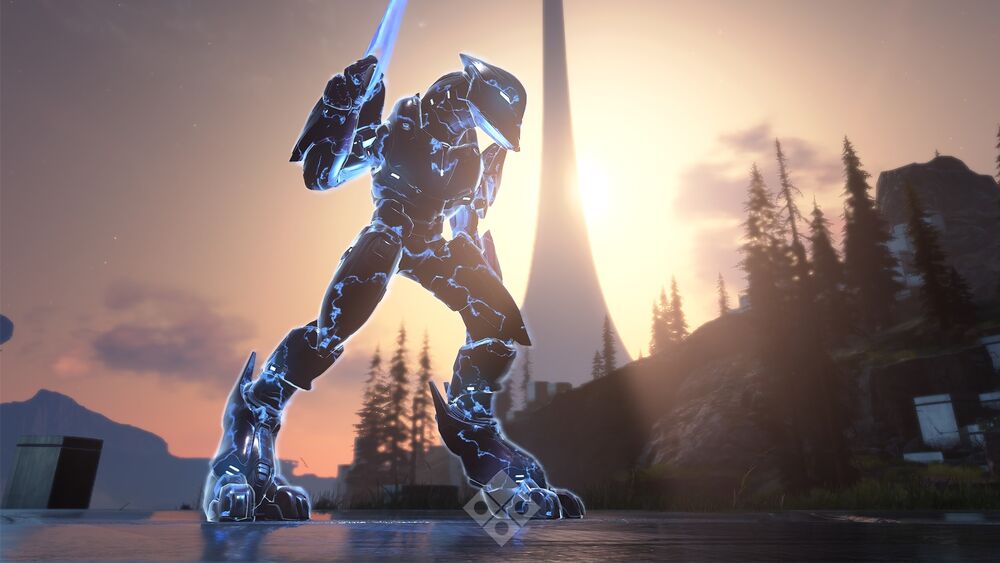
Alex Wakeford
1/23/2023
Welcome to our first Canon Fodder of 2023!
New seasonal content is on its way to Halo Infinite, new novels are in the pipeline ('tis the year of Thel 'Vadam, Olympia Vale, and the Didact!), and that means it's back-to-business for your regularly scheduled Canon Fodder issues. #NewYearNewLore
This month, we're going to take a look at the fan-favorite SPI armor, ahead of the Mirage armor core's arrival in Season 3 of Halo Infinite. We're also going to examine some of the context surrounding the fall of the UNSC Infinity at the start of Halo Infinite, along with the background of some of the special weapons wielded by high-value targets in the campaign.
Let's kick off this year's first issue with a pun that works on so many (perhaps too many) levels…
Mirage à Trois[modifier le wikicode]
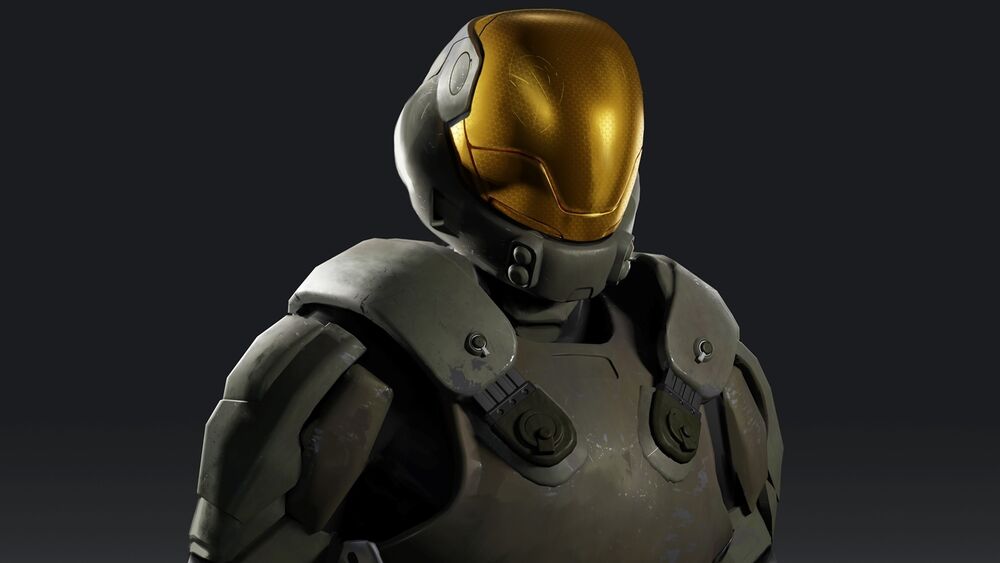
Coming to Halo Infinite in Season 3 (which launches March 7) is the new MIRAGE IIC armor core—or, as many have more colloquially known it: SPI (“Semi-Powered Infiltration”) armor.
For our first Canon Fodder issue of 2023, we thought this would be a great opportunity to look back at some of the various variants of Semi-Powered Infiltration armor that have appeared over the years, before taking a closer look at what awaits us in Season 3.
Fictionally, the roots of SPI armor can be traced back to Colonel James Ackerson, who proposed a top-secret project to produce super-soldiers that were cheaper and more expendable than Doctor Catherine Halsey's SPARTAN-II project.
Though Dr. Halsey's super-soldiers were one of the UNSC's most valuable assets, they were incredibly costly, pulled from a very small gene-candidate pool, did not produce many units, and they were known by military personnel through hushed whispers and battlefield myths long before ONI Section Two decided to go public with the existence of Spartans to boost morale.
And so, the SPARTAN-III project was born. Comparatively inexpensive, highly classified, with soldiers trained to go on missions not even Halsey's Spartans would be considered for…
~ James Ackerson, Halo: Ghosts of Onyx, p. 46
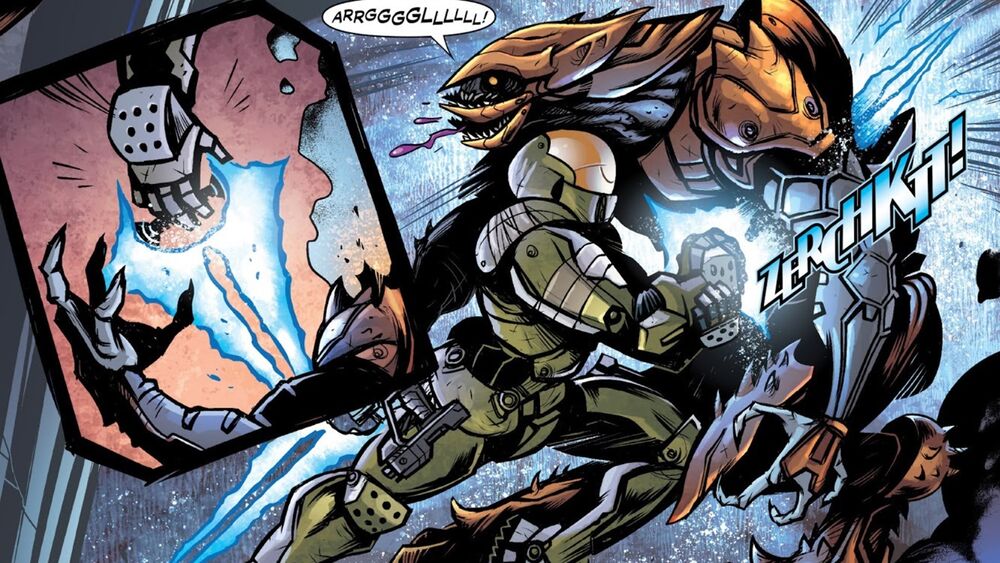
The Semi-Powered Infiltration armor used by the Spartan-IIIs is described in Eric Nylund's Halo: Ghosts of Onyx as one part legionnaire mail, one part tactical body armor, and one part chameleon—certainly more advanced than the battle dress uniform of the ODSTs, but far less powerful than Mjolnir.
SPI armor boasted camouflage capabilities through the use of photoreactive panels and provided enhancements to the strength and mobility of the wearer, but—outside of various prototype or specialized models—it lacked energy shielding.
Of course, this would not be the case for the MIRAGE-class Mjolnir which came to Halo 3 in MCC for the twentieth anniversary of the franchise.
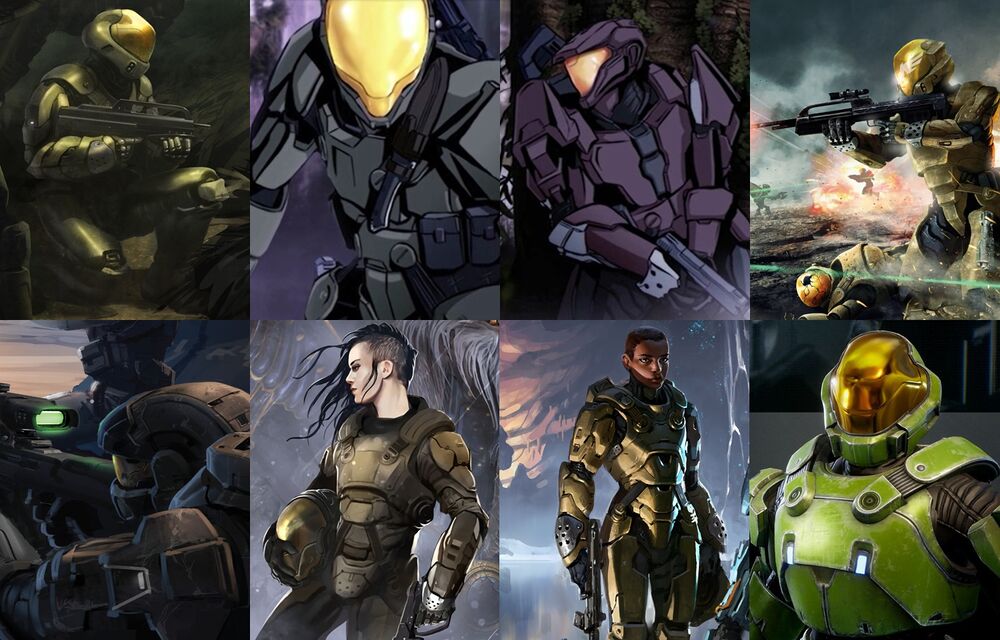
In the image above are a variety of SPI armor variants that have been seen over the years, going back to 2006 when Ghosts of Onyx was first published. Some showcase more variation than others, such as Roland-B210 from the “Headhunters” motion comic adaptation of the Halo: Evolutions short story, as its helmet bears a closer resemblance to the likes of OPERATOR and AIR ASSAULT-class Mjolnir.
The top-right depiction of Operation: PROMETHEUS—the mission that saw the annihilation of Alpha Company (the first batch of three-hundred Spartan-IIIs)—seen in Halo Mythos likewise showcases two different variants. The central Spartan's armor is notably more angular, lacking the traditional curves of the “baseline” Mark-I SPI, while the dead Spartan on the ground has a design which conforms more to baseline but has a much thinner “jaw” and lacks defogging vents.
Both Mark-G313 and Veta Lopis (depicted in the two bottom-left images) are where SPI sees even greater variance from the baseline—the former bearing a distinct resemblance to GRENADIER-class Mjolnir, while the latter bears visual hallmarks of GEN2 Mjolnir and Halo 5's Buccaneer helmet.
Though not as robust as mainline Mjolnir suits, SPI armor has proven to be an excellent platform for testing a variety of field attachments and upgrades that would be far more costly (and at greater risk of destruction) applied to Spartan-exclusive missions. As SPI armor can be worn by unaugmented personnel, some within the UNSC consider it to be a far more effective testbed.
And that brings us to the debut of MIRAGE IIC, which we'll be talking more about in the (very) near future.
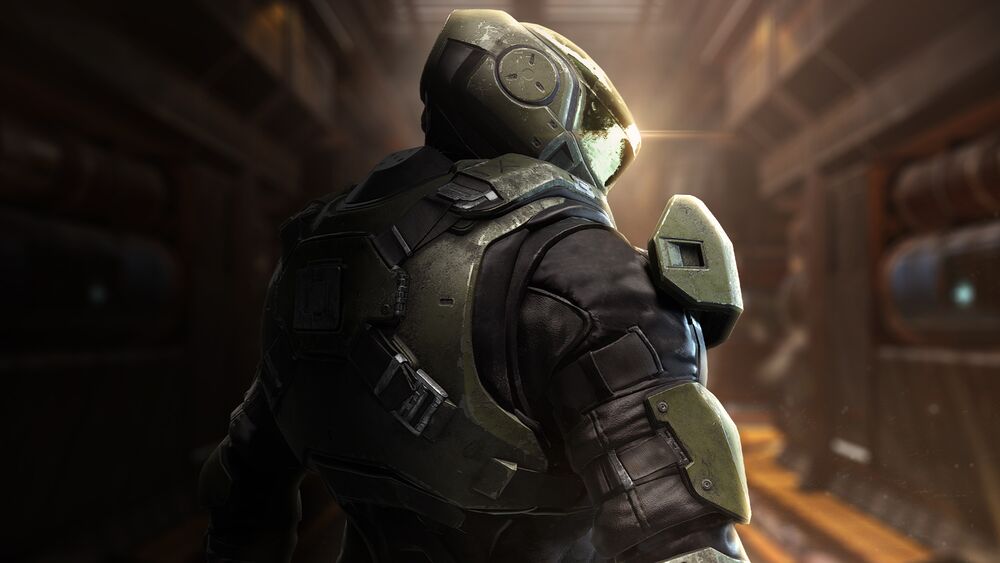
In-keeping with the theme of cost-effectiveness, this modern form of the armor builds on the foundation of the GEN1 Mirage and Semi-Powered Infiltration armor program. By compromising the full range of GEN3 capabilities, it significantly reduces its cost, complexity, and the augmentation requirements of the operator.
Oh, and there's also a groin plate attachment.
Infinityfall[modifier le wikicode]
At the start of Halo Infinite, we witness the UNSC Infinity come under attack by the Banished—a precision strike orchestrated to bring down the UNSC flagship as it approaches Zeta Halo.
We've seen a specific question pop up as folks continue to dissect and analyze the nature of these events:
How was the Infinity seemingly so easy to take down?
Today, we thought we would look at a series of data points that give us a sense of what kind of state the ship was in when the Banished launched their ambush.
This takes us back to October 28, 2558, at the very end of Halo 5: Guardians. The Infinity was recalled to aid in the defense of Earth as Cortana's plan to awaken and disperse the Guardians across the galaxy reached its terminus. When Cortana arrived at Earth and had her Guardian prepare to unleash an attenuation pulse to wipe out power networks across the planet, Captain Lasky ordered an emergency slipspace jump out of the system.
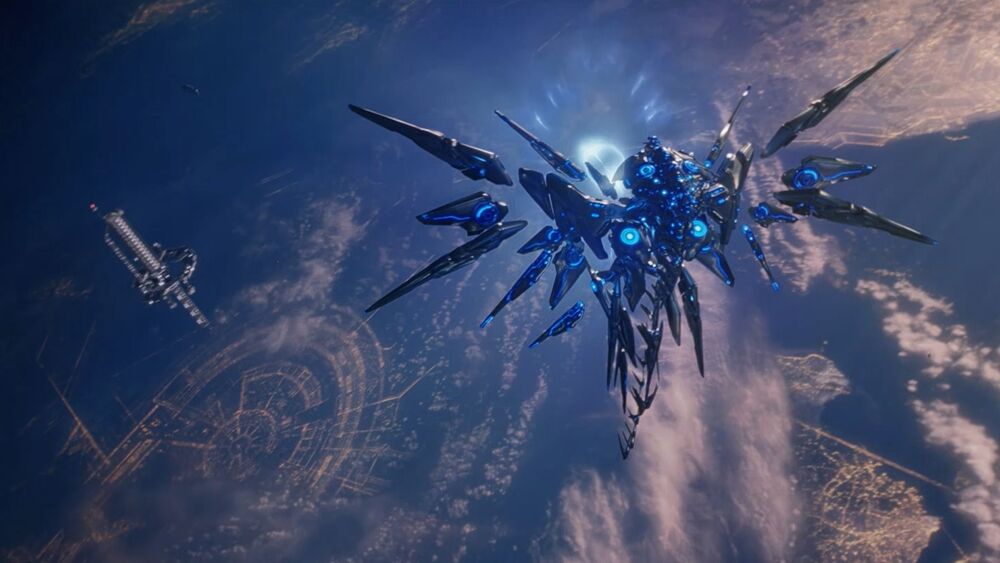
After extracting Blue Team, Fireteam Osiris, Commander Palmer, and Dr. Halsey from Sanghelios the following day (see Matt Forbeck's Halo: Bad Blood), the Infinity was on the run across the galaxy.
UNSC infrastructure across many colonies was cut off as the Created occupation grew, which meant that opportunities to resupply were extremely limited, making any battles the ship might get involved in much more costly in both lives and resources. One account of the ship's resupply activities is detailed in the description for the LECHUZA helmet in Halo Infinite, which states that this particular class of Mjolnir armor was found within an abandoned ONI black site by the Infinity's scout teams in late 2559.
When the Master Chief initiates a local scan to find the UNSC flagship after escaping the scuttled Ghost of Gbraakon, Echo-216's onboard AI notes that the supercarrier's crew size numbered 7150—a significant reduction in personnel from its prime complement, which was over 17,000.
It is notably raised in both Halo Infinite and Halo: The Rubicon Protocol that not all of the personnel aboard the Infinity at the time of the Banished ambush were military. Some of its crew, like everyone's favorite reluctant “pilot” Fernando Esparza, were civilian contractors who were brought aboard to assist in engineering and maintenance efforts for the ship, its various systems, and its complement of armaments and vehicles. Others were supply staff who served a variety of additional non-combat roles, such as Erik Bender—a character from The Rubicon Protocol—who was a barber and mechanic.
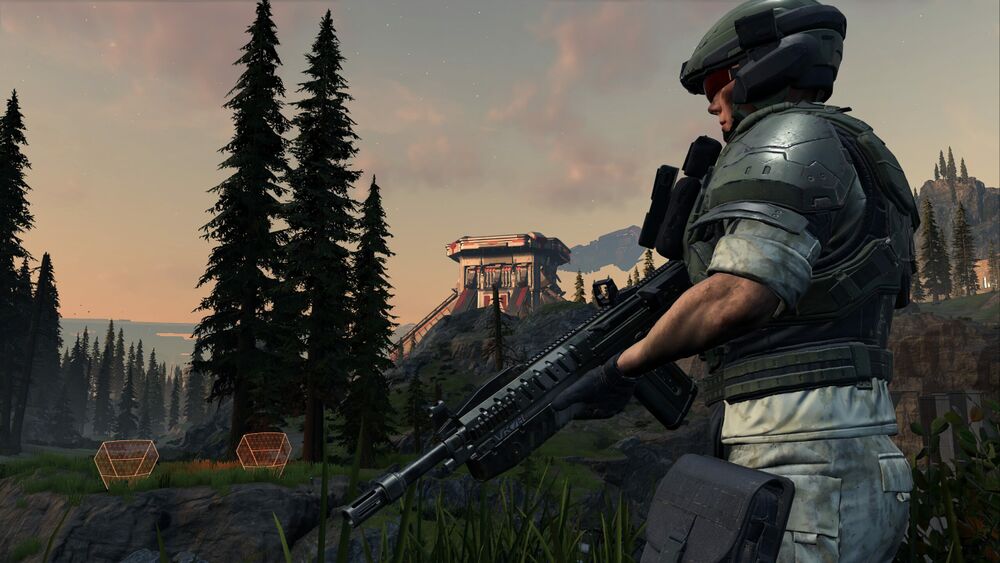
We can therefore point to a great variety of factors which illustrate a broader picture of the state of the UNSC Infinity at the start of Halo Infinite.
Having been on the run across the galaxy for over a year, forced to scavenge whatever abandoned scraps of supplies and matériel they could find, its crew complement had whittled down by some ten-thousand souls (a percentage of which were not military personnel).
With everything for the UNSC riding on a precision strike against Cortana, the Infinity was set upon by a Banished ambush which prompted a ship-wide evacuation to Zeta Halo's surface. The Banished, however, simultaneously initiated boarding action to compromise the ship's hangar bays, led by Atriox himself who had come to claim the Weapon—though she had already been deployed to the ring.
War Chief Escharum would later claim that the feat of taking down humanity's most advanced warship took four minutes, but the literal nature of this claim is disputed, as hyperbole can be a powerful tool in rallying allies with inspiration and demoralizing foes.
Armory Infinitum[modifier le wikicode]
In Halo Infinite, there are a number of weapon variants that can be obtained in the campaign—from the Arcane Sentinel Beam to the Volatile Skewer, and beyond. These can be earned through killing high-value targets, while UNSC variants are acquired by completing activities in Zeta Halo's hub world, like rescuing squads of marines and assaulting Banished outposts.
Armory Infinitum will provide a brief exploration of a moment in time in which these weapons were used. So, let's kick this off with Okro 'Vagaduun claiming his Duelist Energy Sword...
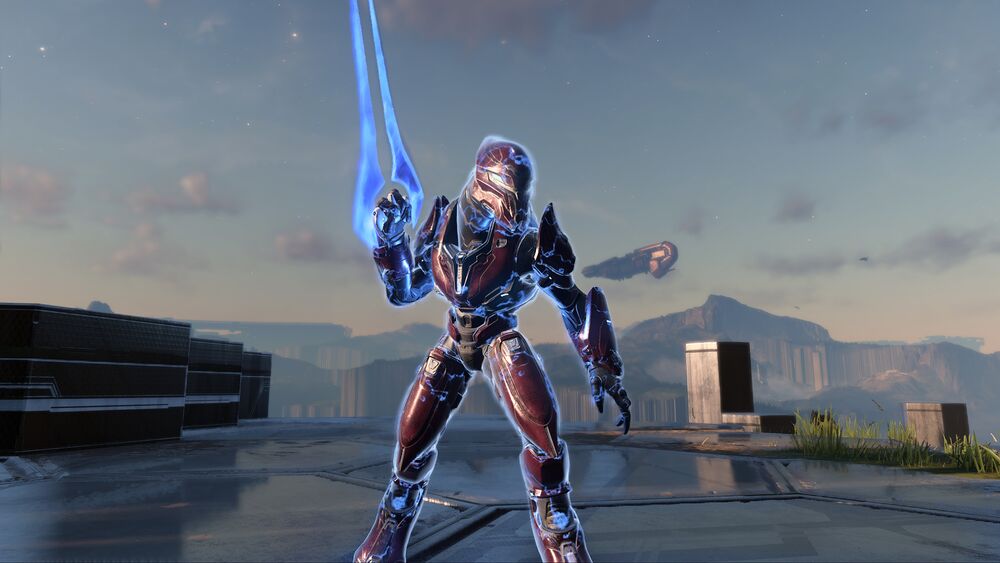
“I know why you have come.”
Okro 'Vagaduun's grip tightened on the hilt of his blade as he and his opponent circled each other.
He had no desire to kill his old master, for Toha 'Sumai was one of the most respected swordsmen and duelists of Sanghelios, but he understood what Atriox sought to teach him. To join the Banished was to sever one's ties to the past. To reject honor, the very core of a Sangheili's being, for payment would come in sport and spoils—not sentiment.
To join the Banished was to have loyalty to none but Atriox. It was for this reason alone that Toha 'Sumai must die.
Okro 'Vagaduun wished to say that he regretted what must be done—that he held fondness for his aged mentor, and that he would take up the enhanced energy sword that was to be his bounty and do great things …
But he said nothing as he ignited his own blade and ran his old master through.
Fiction Friday Facelift[modifier le wikicode]
For those who follow us on social media (which I am going to assume is a large number of you reading this blog!), you may have noticed that we've given some special treatment to the overall presentation of our #FictionFriday posts.
This is a good opportunity to shout out Jack Fletcher (who you may have previously known as “Ultimate Halo”—a well-earned title!) for the amazing work he's put into creating these new custom templates. I'm a big fan of the “collectible lore card” aesthetic, and keen-eyed fans have already spotted a little lore Easter egg concerning a certain symbol's connection to the 2022 edition of the Halo Encyclopedia.
With another, like, fifty of these to look forward to throughout 2023, we'll be filling the #FictionFriday database with enemy units, characters, weapons, vehicles, locations, factions, species—and more.
Community Lore Corner[modifier le wikicode]
While we've been away over the holidays, fans of the Halo universe have been retelling various aspects of its long and storied history.
Let's start from the beginning—like, the very beginning. WildWildWes has put together a video summarizing the origins of the Flood, as detailed in Greg Bear's Forerunner Saga.
TeamAncilla, in collaboration with Installation00, has put together an exploration of the question “What is Slipspace?” to detail one of the core concepts of the Halo universe.
And Installation00 has himself sought to look into the question of whether slipspace travel is possible (though, we may need to wait for Tobias Shaw and Wallace Fujikawa to answer that in just under two-hundred-and-seventy years!)
Some unfortunate things may have happened to Mark-G313 on the Ark, but that's not going to keep him down as GammaCompanyMark has delivered this fantastic breakdown of the UNSC Halberd-class light destroyer.
We all like to imagine our own potential place in the Halo universe were we to be suddenly thrown into it. There are probably a good number of folks out there who fancy their chances as an ODST, and Cabezon has done a great video exploring whether humans can actually survive dropping feet-first into hell.
Finally, if you're feeling the post-holiday blues, why not jump into this video from Halo Guy which explores a particular aspect of last year's Halo: The Rubicon Protocol and its ties to Christmas with a particularly memorable chapter from the book where Spartan Horvath is stranded on a floating island for the festive season with the Jiralahane named Gorian who would like nothing more than to have the Spartan for Christmas dinner…
With that, our first Canon Fodder entry for 2023 is done. We're looking forward to talking about the lore surrounding our upcoming seasonal release, new novels, and more.
Until next month, a very warm welcome back to you all—we can't wait to plunder the depths of the stories and lore coming this year!